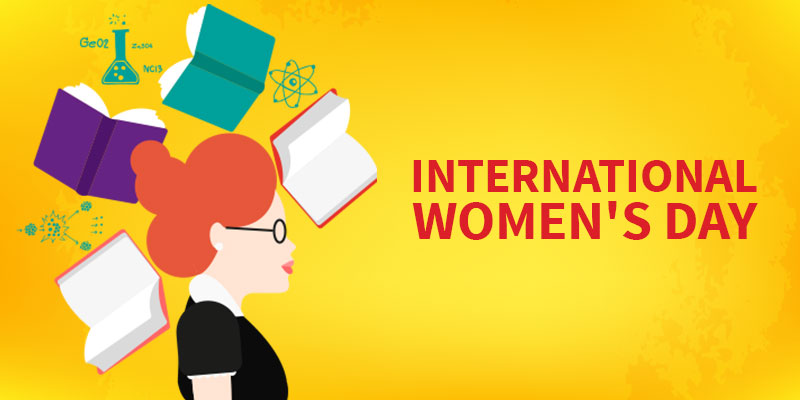International Women’s Day is celebrated globally on 8th March every year. On this day, the social, economic, cultural and political achievements of women are remembered. Women, who are engaged in politics, business, education, inventions, entrepreneurship, and television, are usually felicitated on this day. This day also calls for an improvement in gender equality in today’s world.
International Women’s Day developed along with the activities of labor movements in North America at the end of the twentieth century. For the first time, it was celebrated all over Europe and North America. Since that time, the International Women’s Day has assumed a global dimension for women in developed and developing countries as well.
Great achievements mark women’s empowerment this year at the eve of International Women’s Day. We have female astronauts and Prime Ministers. Women can work and have a family, women have real choices. Each year the world inspires women and celebrates their achievements.
International Women’s Day is an official holiday in many countries including Afghanistan, Armenia, Azerbaijan, Belarus, Burkina Faso, Cambodia, China (for women only), Cuba, Georgia, Guinea-Bissau, Eritrea, Kazakhstan, Kyrgyzstan, Laos, Madagascar (for women only), Moldova, Mongolia, Montenegro, Nepal (for women only), Russia, Tajikistan, Turkmenistan, Uganda, Ukraine, Uzbekistan, Vietnam and Zambia.
A global web of rich and diverse local activity connects women from all around the world ranging from political, business, and government. Local activities including women’s craft markets, theatric performances, fashion parades and more are empowering women in their own way. Many global corporations actively support International Women’s Day by running their own events and campaigns.
Google changes their Google Doodle to commemorate women’s day. Other social media sites like Facebook and Twitter also promote International Women’s Day in their own ways.
The theme of International Women’s Day this year is “Think equal, build smart, innovate for change”. Last Year it was “Time is Now: Rural and Urban Activists Transforming Women’s Lives”.
What colors signify the International Women’s Day?
Purple is a color symbolizing women whereas the combination of purple, green and white symbolizes women’s equality. This originated from the Women’s Social and Political Union in the UK in 1908. Purple signifies justice and dignity and Green symbolizes hope while White color represents purity. Purple with green represents traditional feminism. Purple with yellow represents progressive contemporary feminism.
A brief history of International Women’s Day
The first National Woman’s Day was observed in the United States on 28 February when the Socialist Party of America designated this day in honor of the workers who went on strike in 1908. 15,000 women garment workers protested in New York City against their working conditions and demanded shorter hours, better pay and voting rights.
In 1910 the second International Conference of Working Women was organized in Copenhagen. More than 100 women participated from 17 countries. On that day, Clara Zetkin, who was the leader of the Social Democratic Party, proposed that the women’s day will be celebrated on 8th Mar every year in every country. Women’s Day was pronounced an International day to support women’s rights and equality.
The next year (1911) as per the Copenhagen initiative, International Women’s Day was marked for the first time (19 March) in Austria, Denmark, Germany, and Switzerland and there were more than one million women and men participated in the various rallies in these countries. They demanded women’s rights to work, to vocational training and an end to discrimination on the job.
Less than a week later on 25 March, the tragic ‘Triangle Fire’ in New York City took the lives of more than 140 working women. Most of them were Italian and Jewish immigrants. This tragic event drew attention to the bad working conditions in the United States. The ‘Bread and Roses’ Campaign also started this year.
The Growing Years of Women’s Day Campaign
International Women’s Day become a mechanism for protesting World War I in 1914. Women across Europe held rallies and also expressed women’s solidarity. There was a march in London from Bow to Trafalgar Square in support of Women’s suffrage on March 8, 1914.
Russian Protests
Russian women also observed their first International Women’s Day on the last Sunday in February of 1914 as part of the peace movement. In 1917 they went on strike for ‘Bread and Peace’ to protest the killing of Russian soldiers in the war. The Czar abdicated and the provisional Government granted women the right to vote.
Global Celebrations and United Nations
United Nations began celebrating International Women’s Day (IWD) on 8th March during International Women’s Year 1975. In December 1977, the General Assembly adopted a resolution proclaiming a United Nations Day for Women’s Rights and International Peace to be observed on any day of the year by the Member States, in accordance with their historical and national traditions.
In 1996 United Nations commenced the adoption of an annual theme, “Celebrating the past, Planning for the Future”. This theme was followed in 1997 with “Women at the Peace table” and in 1998 with “Women and Human Rights”, and in 1999 with “World Free of Violence Against Women”, and so on. Themes such as “Empower Rural Women, End Poverty & Hunger” and “A Promise is a Promise – Time for Action to End Violence Against Women” have also been included recently.
The New Millennium
The world moved on as the century changed and feminism wasn’t a popular topic. The International Women’s Day activity around the world had stalled in more countries. 2011 was the of the year of the completion of 100 years of International Women’s Day because a century ago the first International Women’s Day event had been held in 1911 in Austria, Denmark, Germany, and Switzerland. The then US President Barack Obama proclaimed the month of March as Women’s History Month. This was a reflection of the extraordinary tasks done by women in the past.
In the past, the world has witnessed a significant change and attitudinal shift in both women’s and society’s thoughts about women’s equality and emancipation. Many from a younger generation may feel that ‘all the battles have been won for women’ while many feminists from the 1970’s know only too well the longevity and ingrained complexity of patriarchy.














